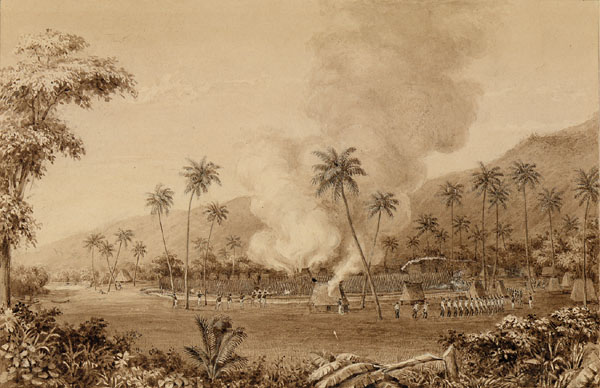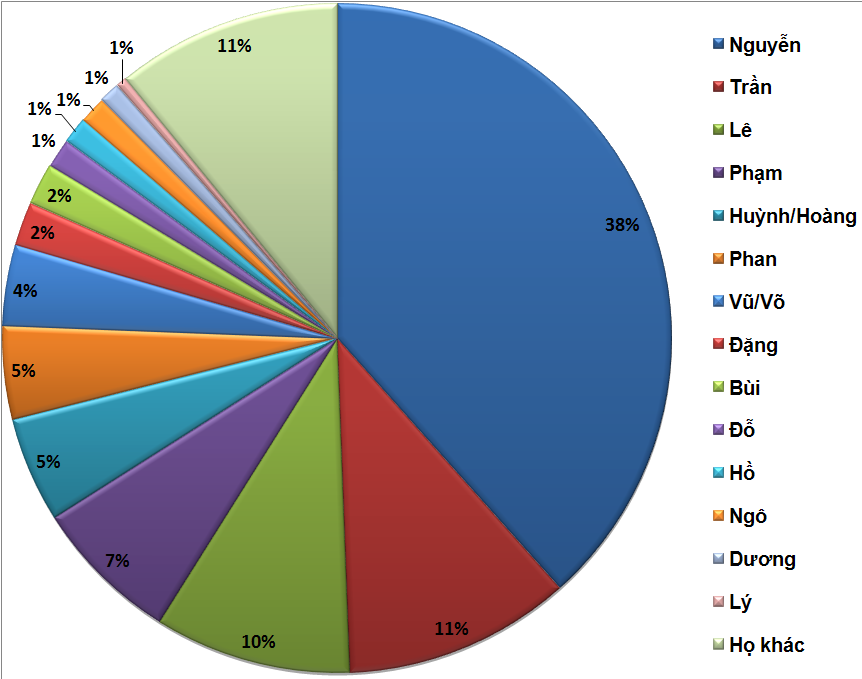|
Siege Of Đà Nẵng
The siege of Tourane (September 1858–March 1860) was a Vietnamese victory during the Cochinchina campaign, a punitive campaign against the Vietnamese launched by France and Spain in 1858. A joint Franco-Spanish expedition under the command of Admiral Charles Rigault de Genouilly captured Tourane (modern Da Nang) in September 1858, but was then besieged in the city by the Vietnamese and forced eventually to evacuate it in March 1860. __TOC__ Background In 1857, the Vietnamese emperor Tự Đức executed two Spanish Catholic missionaries. This was neither the first nor the last such incident. On this occasion, France and Britain had just dispatched a joint military expedition to the Qing Empire as part of the Second Opium War, and the French had troops to hand with which to intervene in Vietnam. In November 1857, the French emperor Napoleon III authorized Admiral Charles Rigault de Genouilly to launch a punitive expedition. In the following September, a joint French and Spani ... [...More Info...] [...Related Items...] OR: [Wikipedia] [Google] [Baidu] |
Cochinchina Campaign
The Cochinchina campaign was a series of military operations between 1858 and 1862, launched by a joint naval expedition force on behalf of the Second French Empire, French Empire and the History of Spain (1808–1874), Kingdom of Spain against the Nguyễn dynasty, Nguyễn period Vietnamese state. It was the opening conflict of the French conquest of Vietnam. Initially a limited punitive expedition against the execution of two Spanish Catholic missionaries in Đại Nam, the ambitious French emperor Napoleon III however, authorized the deployment of increasingly larger contingents, that subdued Đại Nam territory and established French economic and military dominance. The war concluded with the founding of the French Cochinchina, French colony of Cochinchina and inaugurated nearly a century of French Indochina, French colonial rule in Vietnam in particular and Indochina in general. Background During the mid-nineteenth century, European powers New Imperialism, quickly over ... [...More Info...] [...Related Items...] OR: [Wikipedia] [Google] [Baidu] |
Punitive Expedition
A punitive expedition is a military journey undertaken to punish a political entity or any group of people outside the borders of the punishing state or union. It is usually undertaken in response to perceived disobedient or morally wrong behavior by miscreants, as revenge or corrective action, or to apply strong diplomatic pressure without a formal declaration of war (e.g. surgical strike). In the 19th century, punitive expeditions were used more commonly as pretexts for colonial adventures that resulted in annexations, regime changes or changes in policies of the affected state to favour one or more colonial powers. Stowell (1921) provides the following definition: When the territorial sovereign is too weak or is unwilling to enforce respect for international law, a state which is wronged may find it necessary to invade the territory and to chastise the individuals who violate its rights and threaten its security. Historical examples *In the 5th century BC, the Achaem ... [...More Info...] [...Related Items...] OR: [Wikipedia] [Google] [Baidu] |
Siege Of Saigon
The siege of Saigon, a two-year siege of the city by the Vietnamese after its capture on 17 February 1859 by a Franco-Spanish flotilla under the command of the French admiral Charles Rigault de Genouilly, was one of the major events of the Cochinchina campaign (1858–1862). Saigon was of great strategic importance, both as the key food-producing area of Vietnam and as the gateway to Cochinchina. Background In 1858, Admiral Charles Rigault de Genouilly attacked Vietnam under the orders of Napoleon III following the failed mission of diplomat Charles de Montigny. His stated mission was to stop the persecution of Catholic missionaries in the country and assure the unimpeded propagation of the faith. For his descent on Vietnam, Rigault de Genouilly had a force of 14 warships, 1,000 French marine infantry, and 1,000 troops from the Spanish garrisons of the Philippines (550 Spanish infantry and 450 Filipino light infantry). The allied force landed at the port of Tourane in Sep ... [...More Info...] [...Related Items...] OR: [Wikipedia] [Google] [Baidu] |
Nguyen Tri Phuong
Nguyễn (阮) (sometimes abbreviated as Ng̃) is the most common surname of the Vietnamese people. Outside of Vietnam, the surname is commonly rendered without diacritics as ''Nguyen''. By some estimates 30 to 39 percent of Vietnamese people bear this surname.Lê Trung Hoa, ''Họ và tên người Việt Nam'', NXB Khoa học - Xã hội, 2005 Origin and usage is the transcription of the Sino-Vietnamese pronunciation of the character 阮, which originally was used to write a name of a state in Gansu or ruan, an ancient Chinese instrument. The same Chinese character is often romanized as in Mandarin and as in Cantonese. The first recorded mention of a person surnamed Nguyễn is a description dating AD 317, of a journey to Giao Châu undertaken by Eastern Jin dynasty officer Nguyễn Phu and his family. Many events in Vietnamese history have contributed to the name's prominence. In 1232, after usurping the Lý dynasty, Trần Thủ Độ forced the descendants of the ... [...More Info...] [...Related Items...] OR: [Wikipedia] [Google] [Baidu] |
Map Of Tourane
A map is a symbolic depiction of interrelationships, commonly spatial, between things within a space. A map may be annotated with text and graphics. Like any graphic, a map may be fixed to paper or other durable media, or may be displayed on a transitory medium such as a computer screen. Some maps change interactively. Although maps are commonly used to depict geographic elements, they may represent any space, real or fictional. The subject being mapped may be two-dimensional such as Earth's surface, three-dimensional such as Earth's interior, or from an abstract space of any dimension. Maps of geographic territory have a very long tradition and have existed from ancient times. The word "map" comes from the , wherein ''mappa'' meant 'napkin' or 'cloth' and ''mundi'' 'of the world'. Thus, "map" became a shortened term referring to a flat representation of Earth's surface. History Maps have been one of the most important human inventions for millennia, allowing humans t ... [...More Info...] [...Related Items...] OR: [Wikipedia] [Google] [Baidu] |
Carte De Tourane (Đà Nẵng) 1859
Carte may refer to: People * Alexander Carte (1805–1881), Irish British zoologist * Anto Carte (1886–1954), Belgian painter * Helen Carte (1852–1913), Scottish British businesswoman * Richard Carte (1808–1891), British flute-maker * Samuel Carte (1652–1740), English antiquarian * Thomas Carte (1686–1754), English historian * Omer Carte Qalib (1930–2020), Somalian politician * Carte Goodwin (born 1974), U.S. politician * Carte Said (born 1997), Italian soccer player Other uses * CARTE Museum (Cartographic Acquisition Research Teaching and Exhibition), Baton Rouge, Louisiana, USA * Carte network, a French resistance network See also * Deidre LaCarte, Canadian dancer * Julio Lacarte Muró (1918–2016), Uruguayan diplomat * * Card (other) * Cart (other) * Cartes (other) * Cartesian (other) * Descartes (other), including ''des Cartes'' * D'Oyly Carte (other) D'Oyly Carte may refer to any of the following: P ... [...More Info...] [...Related Items...] OR: [Wikipedia] [Google] [Baidu] |
Quảng Ngãi Province
Quảng Ngãi is a northern coastal Provinces of Vietnam, province in the South Central Coast region, the Central Vietnam, Central of Vietnam. It borders Quảng Nam to the north, Bình Định to the south, Kon Tum province, Kon Tum to the west, Gia Lai to the southwest and the South China Sea to the east. Quảng Ngãi is located south of Hanoi and north of Ho Chi Minh City, Hồ Chí Minh City. The province has been historically populated with H're people, H're, Chams, Cham, and Vietnamese people, Kinh peoples, and located on the coast. History The ancient Sa Huỳnh culture inhabited what is now Quảng Ngãi. Remains of it were found in Sa Huỳnh, Đức Phổ District. Within Champa, the region that is now Quảng Ngãi was less significant than Quảng Nam province and Vijaya (Champa), Vijaya. There are only a few Cham remains in the province. The area became part of Vietnam along with Vijaya (Champa), Vijaya (Bình Định province) in 1471. In the early 19th ... [...More Info...] [...Related Items...] OR: [Wikipedia] [Google] [Baidu] |
Military Of The Nguyễn Dynasty
The Military of the Nguyễn dynasty (; chữ Hán: 軍次) were the main military forces of the Nguyễn dynasty from 1802 to August 1945 when it was dismantled by the August Revolution. The Nguyễn military force was initially formed by Nguyễn Hoàng as a division of the military of the Revival Lê dynasty, military of the Revival Lê dynasty in 1558 starting out with 3000 soldiers. During this period it was the military forces of the domain of the Nguyễn lords and commonly fought the Trịnh lords who controlled northern Vietnam. During the Tây Sơn Rebellion it was expelled out most of the county by the Tây Sơn dynasty. After the exiled Nguyễn Phúc Ánh returned and defeated the Tây Sơn rebels he crowned himself as the Gia Long Emperor and the Nguyễn military became the national military of Vietnam. During the French domination period it became two of the five indigenous guards of French Indochina and was turned into a collection police and ceremonial forces. ... [...More Info...] [...Related Items...] OR: [Wikipedia] [Google] [Baidu] |



